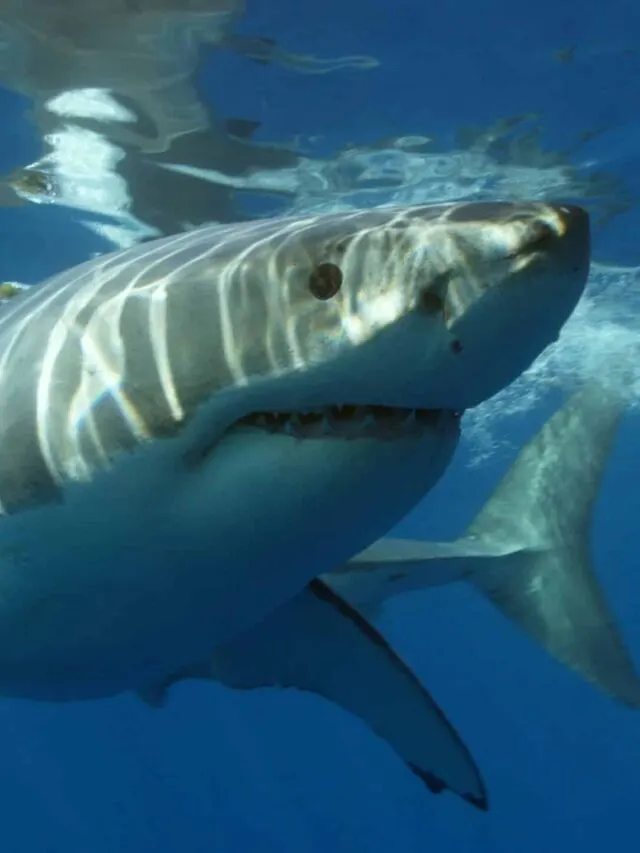Our expert-vetted content is grounded in current scientific publications, yet we acknowledge science’s ever-evolving nature. Read our full editorial and disclosure policy.
Introduction
As a marine biologist with a broad understanding of marine life, it’s apparent that great white sharks are among the most misunderstood creatures in the ocean. My understanding of various marine species and their roles in healthy ecosystems has reminded me of the importance of dispelling myths. Specifically, the pivotal role of animals like the great white shark. The great white shark has a diverse diet, ranging from fish and rays to seals and even whales. Let’s dive deeper into understanding the diet and feeding behavior of this apex predator.
Key Points
- Great white sharks have a varied diet, including fish, marine mammals, rays, and seabirds.
- They use an ambush strategy, camouflaging with their counter-shaded bodies to approach prey undetected.
- Their advanced sensory systems, like the ‘ampullae of Lorenzini’, help detect electromagnetic fields and blood from prey.
- Juvenile sharks primarily feed on fish and rays in coastal waters for rapid growth.
- As apex predators, they maintain marine ecosystem balance by regulating prey populations.
1. About The Great White Shark
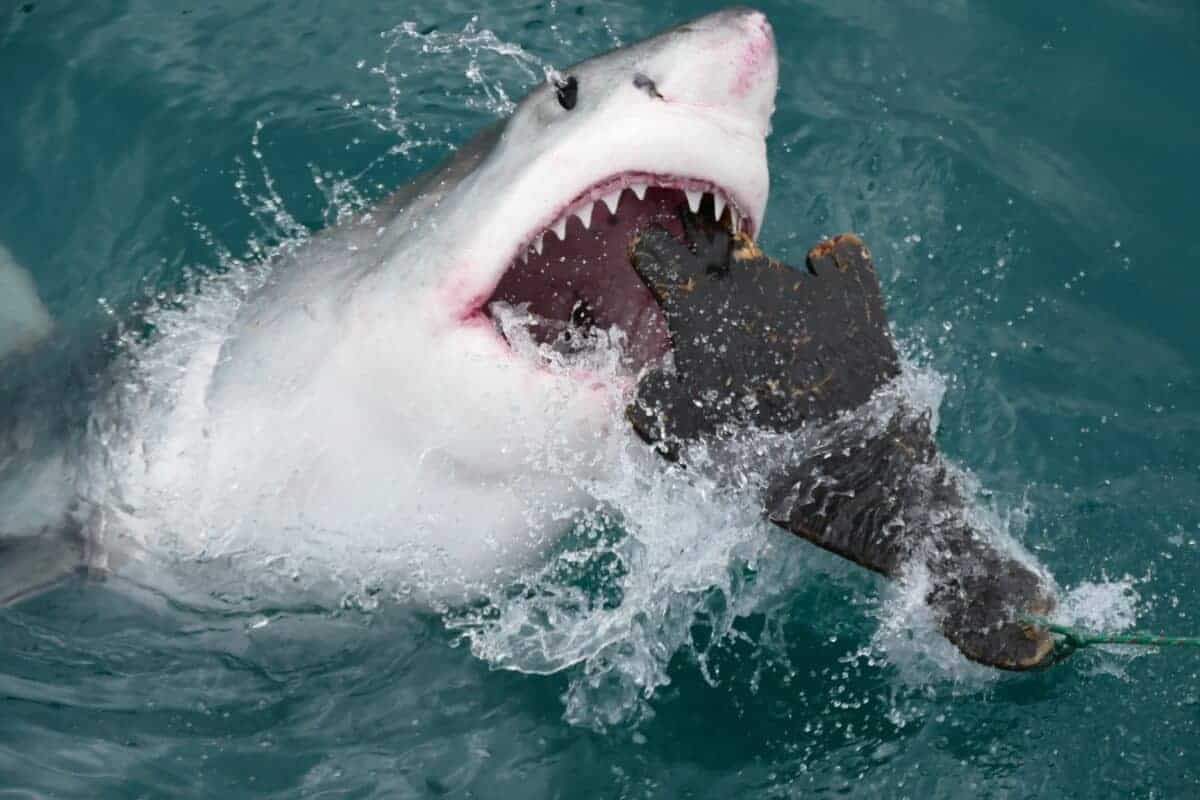
The great white shark, scientifically known as Carcharodon carcharias, is the largest predatory fish on Earth. The great white shark has a rich history that dates back millions of years.
Genetically, great white sharks are closer to mako sharks than any other species. They are endothermic species meaning they can regulate their own body temperature. This allows them to hunt in both warm and cold waters.
Similar to other sharks, great whites have an advanced sensory system made up of specialised smelling cells called the ‘ampullae of Lorenzini’. This allows sharks to detect electromagnetic fields emitted by prey nearby.
2. Great White Shark Diet
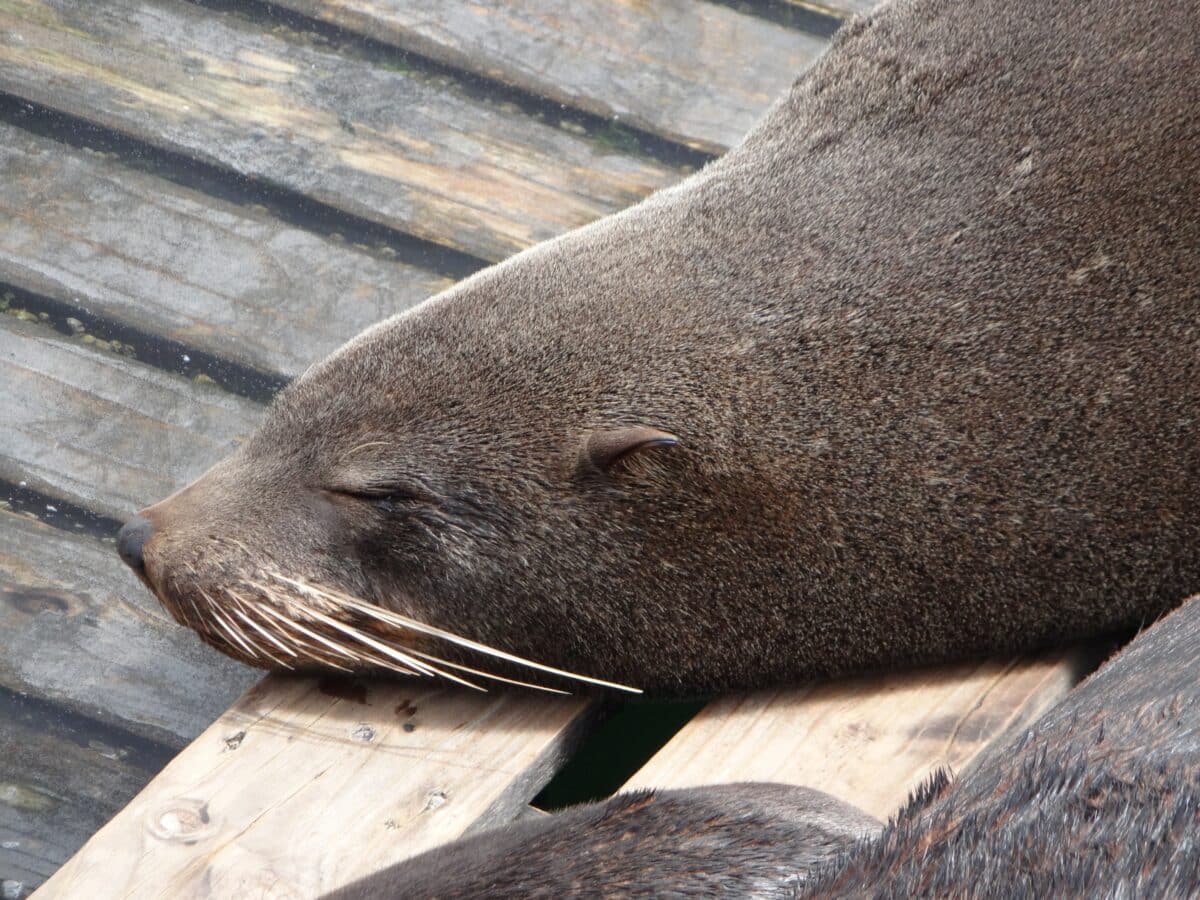
Great white sharks have an extensive and varied carnivorous diet, showcasing their adaptability to different marine environments. Their dietary preferences also evolve as they grow, transitioning from smaller prey during their juvenile stages to larger marine mammals as adults.
Fish
Newborn and juvenile white sharks have a diet that primarily consists of various species of fish. This includes both bony fishes and cartilaginous fishes. As they grow, they also consume smaller shark species. This preference for fish during their younger stages is due to the availability and ease of catching such prey, which provides them with the necessary nutrients for rapid growth.
Marine Mammals
As white sharks mature, they develop a preference for larger and more energy-rich prey. This includes marine mammals such as:
- Sea Turtles: These reptiles are often hunted for their high-fat content, especially when they come to the surface to breathe or during their nesting periods on beaches.
- Seals and Sea Lions: These mammals are a favorite for adult white sharks, especially in regions where the seal and sea lion colonies are abundant. Their high-fat content provides the sharks with a lot of energy.
- Porpoises, Dolphins, and Small Whales: These are less common prey but are targeted due to their size and nutritional value.
Rays
Rays, being close relatives to sharks, are also part of the great white shark’s diet, especially for those sharks that are still in their juvenile stages. With their broad, flat bodies, are often found near the seabed, making them accessible targets. Consuming rays provides the sharks with a good source of protein and other essential nutrients.
Seabirds
While not a primary food source, seabirds can occasionally become prey for great white sharks, especially when these birds dive into the water to catch fish. The shark might mistake a diving seabird for other prey or seize the opportunity for an easy meal. Seabirds like penguins, which spend a considerable amount of time in the water and dive to significant depths, are more likely to be targeted compared to other birds.
Scavenging
White sharks are not just active predators; they are also opportunistic scavengers. When they come across the carcasses of large marine animals, such as dead whales or basking sharks, they will feed on them. This scavenging behavior provides them with an easy meal without the need for a chase or hunt. They use their keen sense of smell to detect these carcasses from miles away.
Cannibalism
Cannibalism is a behavior observed in many shark species, including the great white. Larger white sharks have been known to prey on smaller members of their species. This behavior can be attributed to territorial disputes, competition for food, or simply the opportunistic nature of the shark. It’s a testament to the shark’s primary drive for survival, where if food is scarce, they might resort to cannibalism to sustain themselves.
3. Great White Shark Hunting and Feeding Strategy
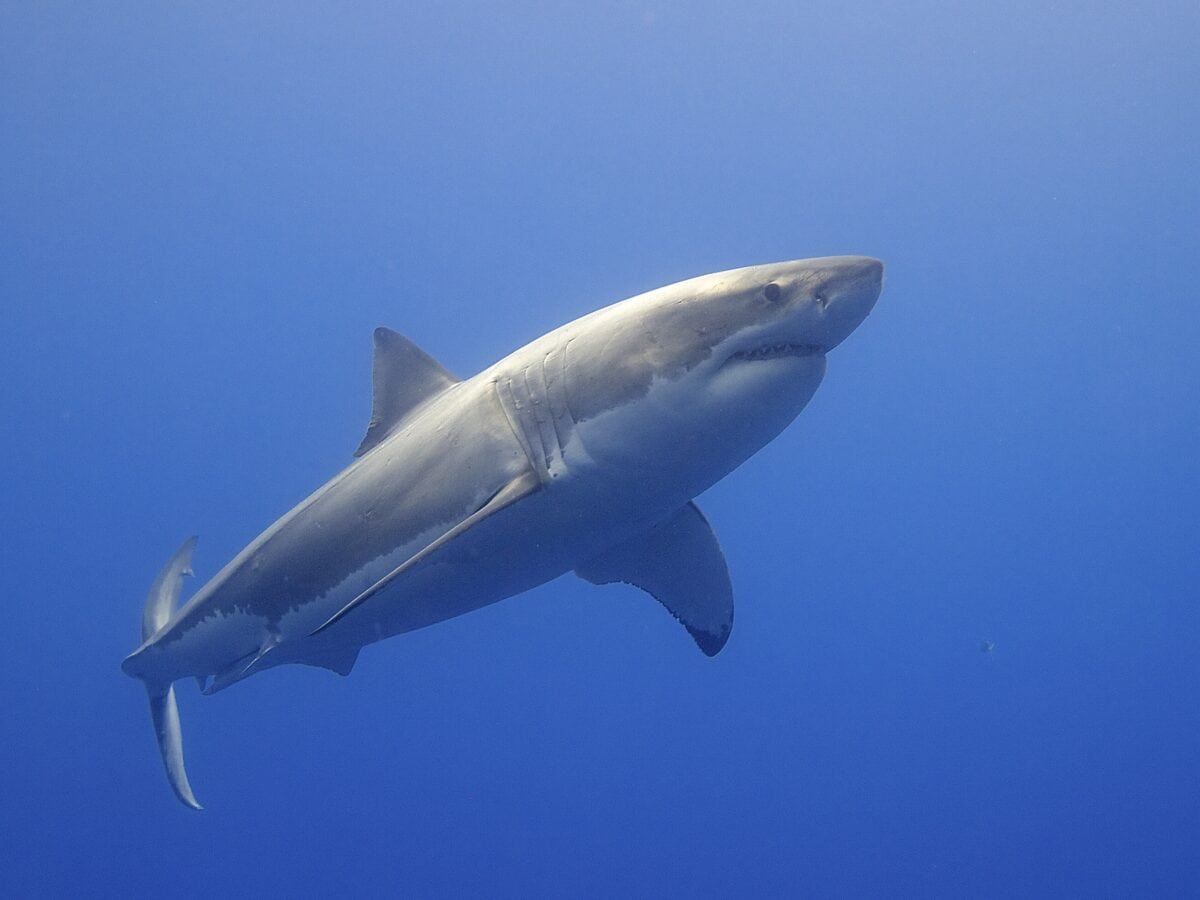
Great white sharks rely heavily on the element of surprise. As apex predators, they use a combination of sharp senses and physical strength to locate and capture their prey.
One of their most notable techniques is the ambush strategy. Using their counter-shaded bodies—dark on the top and light on the bottom—they blend in seamlessly. When viewed from above the shark’s dark grey body blends in with the blue water and when viewed from the below the white belly blends in with the bright light from the surf. This camouflage allows them to approach prey undetected.
Typically, they position themselves beneath their target, and with a powerful thrust of their muscular tails, they can accelerate rapidly, bursting upwards. When hunting seals or sea lions, this burst of speed can result in a full-bodied breach out of the water, capturing their prey in a dramatic aerial display.
Their unique sensory ability plays a crucial role in their hunting success. Equipped with a highly sensitive olfactory system, they can detect a single drop of blood in the water from miles away. Additionally, specialized electroreceptor cells, known as the ‘ampullae of Lorenzini‘, allow them to detect the electromagnetic fields emitted by the movements of potential prey. This combination of stealth, strength, and acute senses makes the great white shark one of the ocean’s most formidable hunters.
4. Juvenile Great White Shark Diet
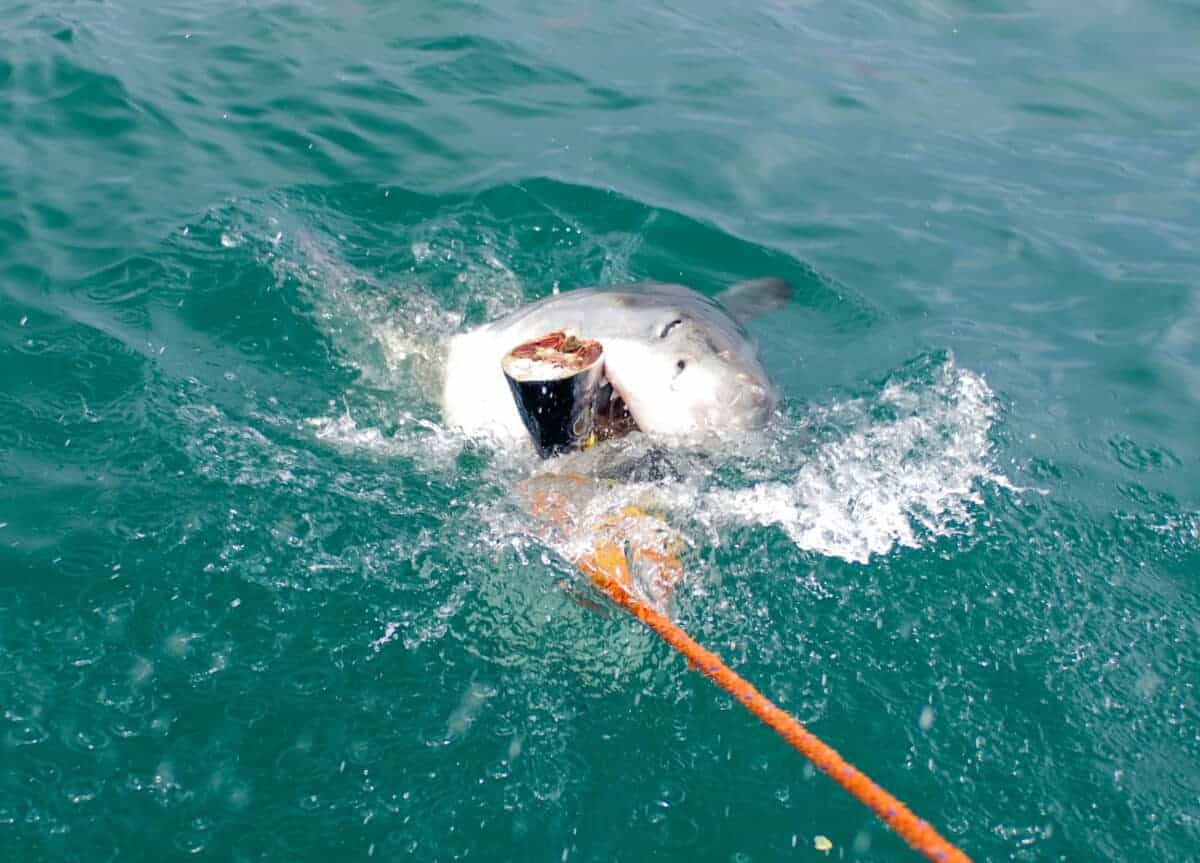
Great white shark pups, despite their relatively small size at birth, are born as capable predators, ready to fend for themselves in the vast ocean. In the early stages of their life, these juvenile sharks have a diet that is different from that of their adult counterparts.
Primarily, they feed on a variety of fish species, favoring those that are abundant and easier to catch. This includes smaller bony fish that inhabit coastal waters, providing the pups with essential nutrients for rapid growth.
As they grow and their hunting skills develop, they might also prey on other smaller sharks, capitalizing on their increasing size and strength. It’s worth noting that during this juvenile phase, their teeth are finely serrated, making them adept at grasping and tearing the flesh of fish.
As they transition towards adulthood, their dietary preferences will expand to include larger prey, but in their formative years, it’s the bounty of the coastal waters, rich in fish and rays, that sustains and nourishes these young apex predators.
5. Influences on the Great White Shark Diet
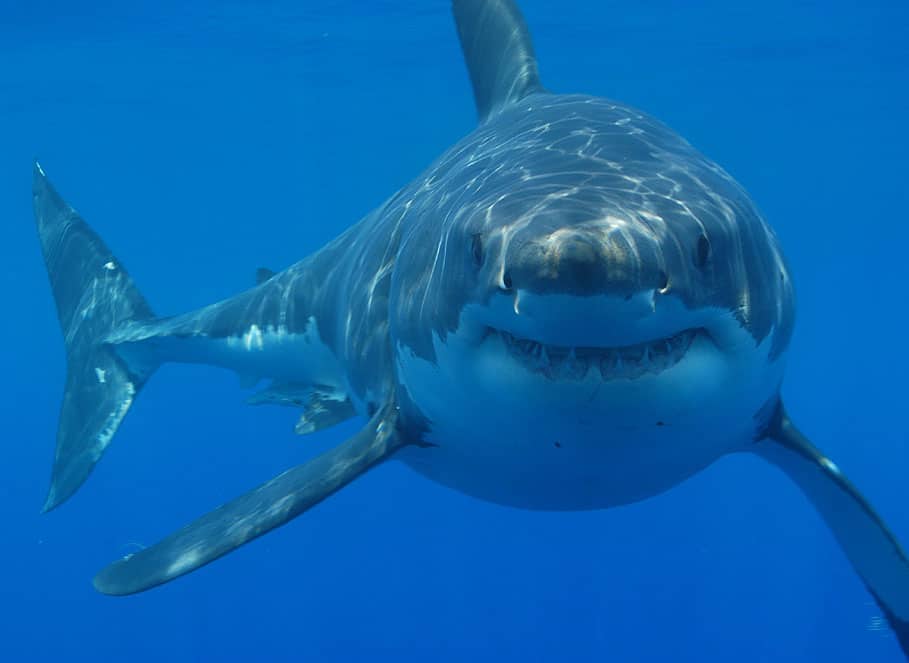
Several external factors can influence what a great white shark might eat on any given day:
- Geographical variations: Depending on their location, their diet might differ. For instance, in regions like Mexico, sea lions might be more prevalent, while in places like Hawaii, they might opt for sea turtles.
- Presence of other predators: In areas where killer whales are present, great whites might alter their hunting patterns or even their preferred prey.
- Environmental conditions: The temperature and clarity of the water, the time of day, and even the season can influence their hunting behavior.
6. Great White Sharks Role In The Food Web
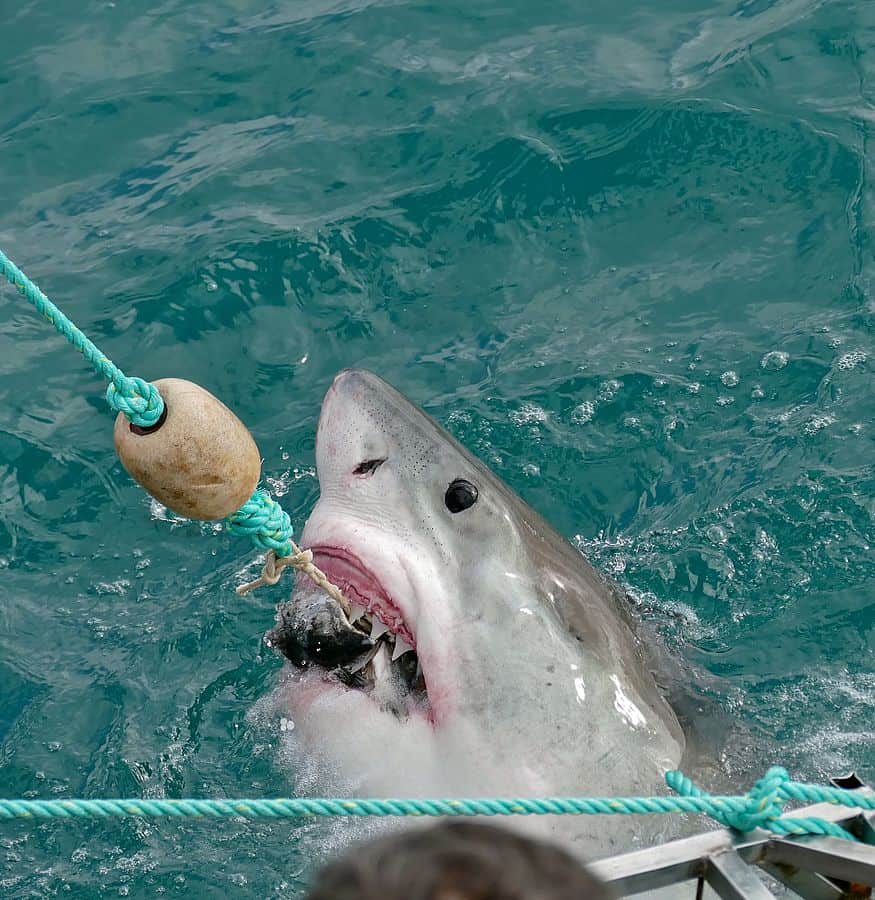
Great white sharks, as apex predators, play a crucial role in maintaining the balance of the marine ecosystem. By controlling the population of their prey, they ensure that no single species becomes overly dominant, which could disrupt the marine food chain.
However, their numbers are rapidly decreasing due to threats like poaching and harmful fishing practices. Conservation efforts are crucial to ensure that these magnificent creatures continue to thrive and play their role in the ecosystem.
7. Great White Shark Attacks
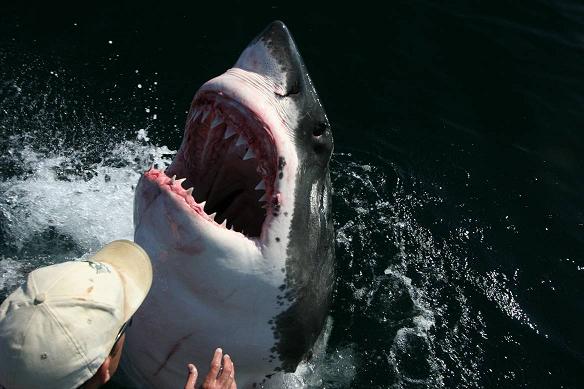
Despite their fearsome reputation, great white sharks are not thoughtless killing machines. Great whites attack people for a variety of reasons and it’s important to note that such incidents are relatively rare.
One reason for shark attacks is mistaken identity. A shark might confuse a human for its usual prey, such as a seal or a fish. The splashing and movements made by swimmers or surfers can attract sharks and potentially provoke an attack. Additionally, sharks are curious creatures and might bite a human simply to investigate what they are.
Despite these possibilities, it’s crucial to remember that sharks do not naturally prey on humans, and the likelihood of a shark attack is extremely low.
Conclusion
The great white shark’s diverse diet, ranging from fish to marine mammals, highlights its role as a top predator in marine ecosystems. Their advanced sensory systems and strategic hunting techniques enable them to efficiently locate and capture a variety of prey.
Conservation efforts surrounding great white sharks have gained momentum in recent decades, recognizing their pivotal role in marine ecosystems and the threats they face. Overfishing, habitat degradation, and human-induced changes in the marine environment have not only directly impacted shark populations but have also affected their available prey.
As apex predators, great whites play a crucial role in regulating the populations of their prey, ensuring a balanced marine ecosystem. Disruptions in their diet due to declining prey populations can have cascading effects on oceanic food webs.
References
- Marie, Levine. (1998). Great White Sharks.
- ML, Dicken. (2008). First observations of young of the year and juvenile great white sharks (Carcharodon carcharias) scavenging from a whale carcass. Marine and Freshwater Research, 59(7):596-602.
- R., A., Martin., D., K., Rossmo., Neil, Hammerschlag. (2009). Hunting patterns and geographic profiling of white shark predation. Journal of Zoology, 279(2):111-118.
Glossary
- Endothermic: Refers to animals that can generate and regulate their own body heat internally, often maintaining a constant body temperature regardless of the external environment.
- Counter-shading: A type of coloration in which an animal’s upper side is darker than its underside. This helps camouflage the animal by reducing shadows and blending it with the surrounding environment when viewed from different angles.
- Olfactory system: The bodily system involved in the sense of smell. It includes organs and structures, like the nose and the brain regions, that detect and process odors.
- Cartilaginous fish: A group of fish that have skeletons made of cartilage instead of bone. Examples include sharks, rays, and skates.
- Ampullae of Lorenzini: Specialized sensory organs found in sharks and some other fish, which detect electric fields and temperature changes in the water. They appear as small pores on the skin and help the fish locate prey.
If you enjoyed this blog, read more on:
The Great White Shark: Apex Predator of the Ocean
Food Blogger Fined $18,500 for Eating Great White Shark
Diver Barely Escapes When Great White Shark Breaks Into Cage
Man Pets a Great White Shark from His Boat
Join our Forum for free today!

- Surprise Hippo Attack on Three Lions - July 21, 2024
- USA’s Best Wildlife Conservation Success Stories - July 14, 2024
- The Incredible Bird with Sunflower Eyes - July 13, 2024

